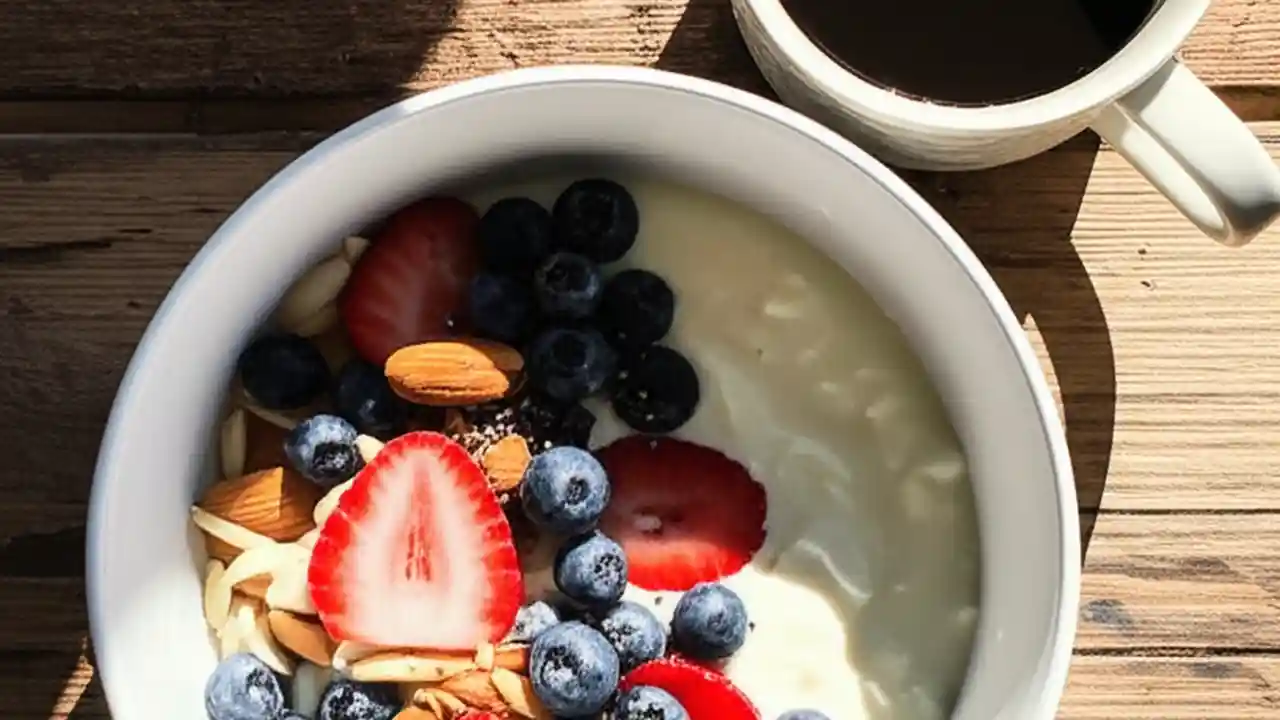The Zone Diet is a balanced nutritional approach designed to optimize hormonal balance, reduce inflammation, and improve overall health and weight management by meticulously controlling the ratio of carbohydrates, protein, and fat in every meal. Essentially, it’s about eating specific amounts of macronutrients to keep your body in a “zone” where it operates at peak efficiency, promoting stable blood sugar and sustained energy. This guide will walk you through everything a beginner needs to know about the Zone Diet, from understanding its core principles and calculating your unique needs to practical meal planning and common pitfalls to avoid, ensuring you have a clear path to successful implementation and lasting wellness.
Table of Contents
Understanding the Zone Diet Fundamentals
What exactly is the Zone Diet and how does it work?
At its heart, the Zone Diet isn’t just another fad; it’s a science-based eating strategy developed by Dr. Barry Sears. The core idea is to consume meals that consist of a precise ratio of macronutrients: 40% carbohydrates, 30% protein, and 30% fat. This 40:30:30 ratio is crucial because it helps stabilize blood sugar levels, which in turn controls insulin and glucagon, two key hormones that influence inflammation, weight gain, and overall health. When these hormones are balanced, your body operates in an optimal “zone” – reducing cellular inflammation, enhancing fat burning, and improving mental clarity and physical performance.
Think of it like this: every time you eat, you’re sending a hormonal message to your body. Too many high-glycemic carbs can cause a rapid spike in blood sugar, leading to an insulin rush, which promotes fat storage and inflammation. The Zone Diet aims to prevent these spikes by balancing macronutrients, leading to a steady release of glucose into the bloodstream. This consistent energy supply helps you feel fuller longer, reduces cravings, and supports your body’s natural healing processes.
What are “Zone Blocks” and how do I calculate them for my needs?
The Zone Diet simplifies macro counting through a system called “Zone Blocks.” A Zone Block is a unit of macronutrients, representing a specific amount of protein, carbohydrates, and fat. Each block contains:
- 1 block of protein = 7 grams of protein
- 1 block of carbohydrates = 9 grams of carbohydrates
- 1 block of fat = 1.5 grams of fat
To follow the diet, you determine your individual daily “block prescription.” This is typically based on your body weight, activity level, and lean body mass. Most adult women start with 11 blocks per day, and most adult men start with 14 blocks per day, distributed across three meals and two snacks. For example, a typical 3-block meal would consist of 3 blocks of protein, 3 blocks of carbs, and 3 blocks of fat.
Calculating your personal block prescription can seem a bit daunting at first, but it’s essential for tailoring the diet to your specific needs. The most common method involves estimating your lean body mass and then multiplying it by an activity factor. Dr. Sears’ official resources provide detailed calculators, but for a beginner, a simpler approach is to use a general guideline and adjust based on how you feel. For instance, if you’re a moderately active woman aiming for weight management, you might start with 11 blocks. If you’re a very active man, you might need 17-20 blocks.
Here’s a simplified way to think about it for beginners:
- **Estimate your activity level:**
- Sedentary: 0.5-0.6 blocks per pound of lean body mass (or use base 11 for women, 14 for men).
- Moderately Active: 0.7-0.8 blocks per pound.
- Very Active/Athlete: 0.9-1.0 blocks per pound.
- **Divide your total daily blocks into meals and snacks.** A common distribution is 3-4 blocks per meal and 1-2 blocks per snack.
- **Adjust based on hunger, energy levels, and results.** If you’re constantly hungry, you might need more blocks. If you’re not seeing results, you might need fewer.
Foods & Fueling Your Zone
What foods are allowed on the Zone Diet?
The Zone Diet emphasizes lean proteins, beneficial fats, and low-glycemic load carbohydrates. The idea is to choose whole, unprocessed foods that help maintain stable blood sugar and reduce inflammation.
Here’s a breakdown of the types of foods you’ll be focusing on:
- **Lean Proteins:** Skinless chicken breast, turkey, fish (salmon, cod, tuna), egg whites, lean beef, low-fat dairy (cottage cheese, Greek yogurt), plant-based proteins (tofu, tempeh, lentils – in moderation due to carb content).
- **Beneficial Carbohydrates (Low-Glycemic Load):** Plenty of non-starchy vegetables (broccoli, spinach, bell peppers, leafy greens, asparagus, zucchini), and fruits (berries, apples, oranges, pears). Small amounts of certain grains (oatmeal, barley) and legumes (beans, lentils) are allowed but must be carefully measured due to their higher carb content.
- **Healthy Fats:** Monounsaturated fats like olive oil, avocado, almonds, macadamia nuts, and omega-3 rich fish oils. These fats are crucial for satiety and anti-inflammatory benefits.
The emphasis is on quality. Imagine your plate filled with vibrant colors from vegetables, a modest portion of lean protein, and a drizzle of healthy oil. This approach naturally encourages a diet rich in fiber, vitamins, and minerals, while keeping processed ingredients at bay.
What foods should I avoid on the Zone Diet?
To keep your body in the “zone” and prevent insulin spikes, certain foods are either heavily restricted or avoided altogether:
- **High-Glycemic Carbohydrates:** These cause rapid blood sugar spikes and include sugar, white bread, white pasta, white rice, potatoes, corn, carrots (in large quantities), and highly processed cereals.
- **Processed Foods & Sugary Drinks:** Anything with added sugar, high-fructose corn syrup, artificial sweeteners, or excessive amounts of unhealthy fats. This means sodas, candies, pastries, most packaged snacks, and fast food are off-limits.
- **Certain Starchy Vegetables & Fruits (in excess):** While vegetables and fruits are generally good, starchy vegetables like potatoes, sweet potatoes, and corn, and very sweet fruits like bananas and grapes, need to be consumed in very small, measured portions due to their higher sugar content.
- **Refined Grains:** White flour products, white rice, and most conventional breakfast cereals fall into this category.
- **Unhealthy Fats:** Trans fats and excessive saturated fats, often found in fried foods, processed snacks, and some fatty meats, should be avoided.
The goal isn’t to demonize these foods, but to understand their impact on your hormonal balance and choose alternatives that support your body’s optimal functioning. It’s about making informed choices that lead to sustained energy and reduced inflammation.
Can you provide a sample Zone Diet meal plan or typical recipes?
Absolutely! A Zone Diet meal isn’t about deprivation; it’s about smart combinations. The key is to assemble meals and snacks that hit your block targets for protein, carbs, and fat. Here’s a sample daily meal plan for a 14-block individual (a common starting point for men), illustrating how blocks are distributed:
| Meal | Blocks | Protein Example (7g/block) | Carbohydrate Example (9g/block) | Fat Example (1.5g/block) |
|---|---|---|---|---|
| Breakfast | 4 blocks | 4 large egg whites (28g) | 1 cup cooked oatmeal (36g) | 10 almonds or 1/3 avocado (6g) |
| Snack 1 | 2 blocks | 2 oz chicken breast (14g) | 1 cup strawberries (18g) | 1/2 tsp olive oil or 6 peanuts (3g) |
| Lunch | 4 blocks | 4 oz grilled salmon (28g) | 2 cups mixed greens, 1/2 bell pepper (36g) | 1 tbsp olive oil dressing (6g) |
| Snack 2 | 2 blocks | 1/2 cup cottage cheese (14g) | 1 small apple (18g) | 6 cashews (3g) |
| Dinner | 2 blocks | 2 oz lean steak (14g) | 1 cup steamed broccoli (18g) | 1/2 tsp olive oil (3g) |
This is just one example. You can mix and match foods to create countless delicious and Zone-compliant meals. The trick is to have a good understanding of the block values for common foods. Many online resources and Zone Diet books provide extensive food lists with their corresponding block values. For instance, a small apple might be 1 carb block, while a cup of cooked broccoli is also 1 carb block. A single chicken breast could be 3-4 protein blocks depending on its size.
Benefits, Considerations & Who It’s For
What are the main benefits of following the Zone Diet?
People who consistently follow the Zone Diet often report a wide array of benefits, extending beyond just weight loss. From my experience, some of the most impactful advantages include:
- **Stable Blood Sugar & Energy Levels:** This is perhaps the most immediate and noticeable benefit. By avoiding dramatic spikes and crashes, you experience sustained energy throughout the day, reducing that mid-afternoon slump and improving focus.
- **Reduced Inflammation:** The precise macronutrient ratio and emphasis on healthy fats and low-glycemic carbs help to lower cellular inflammation, which is linked to a host of chronic diseases, from heart disease to certain cancers. Many report reduced joint pain and improved skin conditions.
- **Effective Weight Management:** By stabilizing insulin, the Zone Diet encourages your body to burn stored fat for energy, leading to sustainable weight loss without feeling deprived. The diet promotes satiety, helping to curb overeating.
- **Improved Mental Clarity & Mood:** Balanced blood sugar directly impacts brain function. Many individuals report enhanced focus, better mood regulation, and reduced brain fog.
- **Enhanced Physical Performance:** Athletes often find the Zone Diet beneficial for consistent energy during training, faster recovery, and optimized body composition.
It’s not just about looking good; it’s about feeling good, from the inside out. The Zone Diet’s systematic approach offers a pathway to a more balanced and energetic life.
Is the Zone Diet suitable for everyone, including athletes or those with health conditions?
While the Zone Diet offers significant benefits for many, it’s not a one-size-fits-all solution. It can be highly beneficial for a wide range of individuals, including:
- **Individuals seeking weight loss:** Its emphasis on portion control and hormonal balance makes it effective for sustainable weight management.
- **Those with insulin resistance or pre-diabetes:** The diet’s focus on stable blood sugar can be particularly helpful in managing these conditions. Always consult a doctor before making significant dietary changes.
- **Athletes and active individuals:** Many athletes use the Zone Diet to optimize performance, enhance recovery, and manage body composition. The block system allows for easy scaling of calories based on energy demands.
- **People looking to reduce inflammation:** Its anti-inflammatory principles can be beneficial for those with inflammatory conditions or general wellness goals.
However, there are groups for whom it might require careful consideration or not be ideal:
- **Individuals with specific medical conditions:** Those with kidney disease, eating disorders, or other serious health issues should always consult a doctor or registered dietitian before starting the Zone Diet. The protein levels, while moderate, might need adjustment for certain conditions.
- **Pregnant or breastfeeding women:** Nutritional needs are unique during these phases, and a doctor’s guidance is essential.
- **Strict vegetarians or vegans:** While possible, it requires more meticulous planning to ensure adequate protein and fat intake while adhering to the block system, as many plant-based protein sources also contain higher carb levels.
My personal take is always to listen to your body and consult with a healthcare professional, especially if you have underlying health concerns. The Zone Diet is a powerful tool, but like any tool, it needs to be used appropriately.
What are the potential drawbacks or challenges of the Zone Diet?
No diet is without its challenges, and the Zone Diet is no exception. While its benefits are compelling, beginners should be aware of a few potential hurdles:
- **Initial Learning Curve:** Understanding “blocks” and accurately measuring food can feel cumbersome at first. It requires a commitment to learning food values and planning meals. Some find the precision too restrictive.
- **Time Commitment for Preparation:** To consistently hit your block targets, you’ll likely need to spend more time on meal planning, grocery shopping, and food preparation. Eating out can also be tricky.
- **Portion Sizes May Feel Small:** For individuals accustomed to larger portion sizes, especially of carbohydrates, the initial adjustment can lead to feelings of hunger, particularly in the first few days as your body adapts.
- **Social Challenges:** Navigating social gatherings, holidays, and dining out can be difficult when trying to adhere strictly to the Zone ratios. It requires discipline and a willingness to make informed choices.
- **Cost:** Emphasizing whole, lean proteins and fresh produce can sometimes be more expensive than a diet heavy in processed foods. However, this is an investment in your health.
I remember when I first started, the block system felt like learning a new language. But stick with it! After a week or two, it becomes second nature, and the benefits far outweigh the initial effort. It’s about building new habits, not just following a temporary plan.
Getting Started & Staying on Track
How do I start the Zone Diet as a beginner?
Embarking on the Zone Diet journey is an exciting step towards better health! Here’s a step-by-step guide to help you get started smoothly:
- **Calculate Your Block Prescription:** This is the foundational step. Use an online Zone Diet calculator or a reputable guide to estimate your daily block needs based on your body composition and activity level. As a beginner, it’s okay to start with a general estimate (e.g., 11 blocks for women, 14 for men) and adjust.
- **Stock Your Kitchen:** Clear out highly processed foods, sugary snacks, and refined grains. Fill your pantry and fridge with Zone-friendly items: lean proteins (chicken, fish, eggs), plenty of non-starchy vegetables, berries, olive oil, and nuts.
- **Invest in Basic Tools:** A food scale (digital is best) and measuring cups are invaluable for accurately portioning out your blocks, especially in the beginning.
- **Plan Your First Few Days:** Don’t try to wing it! Plan your meals and snacks for at least the first three to five days. This reduces stress and ensures you have all the necessary ingredients. Look up some simple Zone-friendly recipes to get started.
- **Start Simple:** Don’t overwhelm yourself. Begin with basic, easy-to-measure foods. For example, a breakfast of scrambled egg whites with spinach, a handful of berries, and a few almonds.
- **Pre-Portion if Possible:** Cook larger batches of protein and chop vegetables in advance. Pre-portioning snacks into individual containers can save time and prevent overeating.
- **Stay Hydrated:** Drink plenty of water throughout the day. Sometimes, what feels like hunger is actually thirst.
- **Be Patient and Kind to Yourself:** There will be days when you miss a block target or slip up. That’s okay! The key is consistency over perfection. Learn from it and get back on track with your next meal.
Remember that the first week is often the hardest as your body adapts to the new macro ratios. You might experience some initial fatigue or cravings, but these usually subside as your body enters the “zone” and begins burning fat more efficiently.
How do I track my Zone Diet progress and stay motivated?
Staying motivated on any diet requires seeing progress and feeling the benefits. For the Zone Diet, tracking your journey is key:
- **Keep a Food Journal:** Especially in the beginning, meticulously tracking what you eat and its block values helps you learn and identify patterns. You can use a simple notebook, a spreadsheet, or a dedicated Zone Diet app. This also helps you see if you’re consistently hitting your targets.
- **Monitor How You Feel:** Pay attention to your energy levels, mood, sleep quality, and hunger cues. Are you less irritable? Do you have sustained energy throughout the day? These internal indicators are often more powerful motivators than the number on the scale.
- **Take Measurements (Not Just Weight):** The Zone Diet is excellent for body composition changes. Take regular measurements of your waist, hips, and other areas. Muscle weighs more than fat, so the scale might not always reflect your progress accurately. Consider before-and-after photos.
- **Set Realistic Goals:** Don’t expect dramatic results overnight. Focus on consistent progress and small victories. Aim for non-scale victories, like fitting into old clothes or having more energy for your workouts.
- **Find a Support System:** Share your journey with a friend, family member, or join an online community. Having someone to cheer you on or share challenges with can make a huge difference.
- **Educate Yourself Continually:** The more you understand the science behind the Zone Diet, the more committed you’ll be. Read books, articles, and scientific studies related to hormonal balance and nutrition.
My best advice is to focus on the overall trend rather than daily fluctuations. One less-than-perfect meal won’t derail your progress if you’re consistent the rest of the time. Celebrate your wins, no matter how small!
What are some common mistakes beginners make on the Zone Diet and how can I avoid them?
Even with the best intentions, beginners often stumble on common pitfalls. Being aware of them can help you steer clear:
- **Underestimating Carb Blocks:** Many healthy fruits and vegetables still contain carbohydrates that need to be counted. A common mistake is to overeat “healthy” carbs like bananas, sweet potatoes, or even too many berries, which can throw off your ratios. *Avoid it:* Measure all carbs carefully, especially in the beginning.
- **Forgetting About Fat Blocks:** While healthy fats are crucial, they are calorie-dense. A drizzle of olive oil or a handful of nuts quickly adds up. Beginners sometimes focus only on protein and carbs and neglect the fat component, leading to insufficient fat intake or overconsumption. *Avoid it:* Always include your fat blocks with each meal and snack.
- **Not Eating Enough Protein at Meals:** Protein is the cornerstone of satiety and muscle preservation in the Zone Diet. Skimping on protein can leave you feeling hungry and lead to cravings. *Avoid it:* Ensure each meal has its full protein block allocation.
- **Skipping Snacks:** The Zone Diet encourages frequent, small meals and snacks (typically 5-6 times a day) to maintain stable blood sugar. Skipping snacks can lead to excessive hunger at the next meal and potential overeating. *Avoid it:* Plan your snacks just as diligently as your main meals.
- **Lack of Meal Prep:** The precision of the Zone Diet makes spontaneous eating difficult. Without prepared meals or pre-portioned ingredients, it’s easy to fall back on less-than-optimal choices. *Avoid it:* Dedicate time each week for meal planning and batch cooking.
- **Becoming Overwhelmed by Precision:** While precision is important, especially initially, don’t let it paralyze you. It’s a learning process. *Avoid it:* Start with simple, easy-to-measure foods, and allow yourself grace for minor inaccuracies. You’ll get better with practice.
I remember one time I completely miscalculated the carb blocks in a stir-fry, adding far too many bell peppers and onions without adjusting. It felt like I was constantly hungry that day! Learning from those small mistakes is part of the journey. Don’t be too hard on yourself; just adjust and keep moving forward.
Zone Diet in Context: Comparisons & Practicalities
How does the Zone Diet compare to other popular diets like Keto, Paleo, or Atkins?
The dietary landscape is vast, and the Zone Diet often gets compared to other popular eating approaches. While they all aim for better health or weight management, their core principles differ significantly, primarily in their macronutrient ratios:
| Diet | Primary Macronutrient Ratios | Key Focus/Mechanism | Pros | Cons |
|---|---|---|---|---|
| **Zone Diet** | 40% Carbs, 30% Protein, 30% Fat | Hormonal balance (insulin/glucagon), inflammation control, stable blood sugar. | Balanced, anti-inflammatory, sustainable, good for energy/mood. | Requires precise measurement, initial learning curve, meal prep. |
| **Ketogenic (Keto)** | 5-10% Carbs, 20-25% Protein, 70-75% Fat | Ketosis (burning fat for fuel), extreme carb restriction. | Rapid weight loss, appetite suppression, blood sugar control. | Very restrictive, “keto flu” symptoms, long-term sustainability debates, nutrient deficiencies if not well-planned. |
| **Paleo Diet** | No strict macros, emphasis on “ancestral” foods. | Eating like our hunter-gatherer ancestors: whole, unprocessed foods. | Eliminates processed foods, grains, dairy, legumes; focuses on nutrient density. | Can be restrictive (no dairy/legumes), difficult to follow consistently, no clear macro guidelines. |
| **Atkins Diet** | Very low carbs initially, then gradual increase. High protein, high fat. | Inducing ketosis (similar to keto but less strict on fat percentage), carb restriction. | Rapid initial weight loss, appetite control. | Can be restrictive, potential for nutrient deficiencies, some find it difficult to sustain long-term. |
The Zone Diet stands out for its balanced approach. Unlike Keto or Atkins, it doesn’t drastically cut out an entire macronutrient group, which can make it more sustainable and nutritionally complete for many people in the long run. Compared to Paleo, the Zone Diet is more prescriptive about portions and ratios, offering a clearer framework for hormonal balance. Ultimately, the “best” diet is the one you can adhere to consistently and that supports your individual health goals.
Is the Zone Diet expensive or difficult to maintain financially?
The cost of following the Zone Diet can vary, much like any eating plan, depending on your choices and habits. It’s not inherently “expensive,” but it does encourage certain purchasing behaviors that might differ from a budget heavily reliant on processed foods.
Here’s a breakdown of the financial aspects:
- **Initial Investment:** You might find an initial bump in your grocery bill if you’re transitioning from a diet heavy in cheap, processed foods. The Zone Diet emphasizes lean proteins, fresh fruits, and plenty of vegetables, which can sometimes cost more per pound than highly processed items. Investing in a good food scale is a minor one-time cost.
- **Smart Shopping Strategies:** To keep costs down, focus on:
- **Seasonal Produce:** Buying fruits and vegetables when they are in season can significantly reduce costs.
- **Bulk Buying:** Purchase lean proteins (like chicken breast, frozen fish) in larger quantities when on sale and freeze them.
- **Store Brands:** Opt for store-brand healthy fats like olive oil or nuts when available.
- **Meal Planning:** This is crucial for reducing food waste, which directly impacts your budget. When you know exactly what you’re eating, you buy only what you need.
- **Reduced Spending on Unhealthy Items:** You’ll likely save money on sugary drinks, chips, cookies, fast food, and restaurant meals that don’t fit the Zone principles. This often offsets the increased cost of whole foods.
- **Long-Term Health Savings:** While not a direct financial cost, consider the long-term health benefits. A balanced diet can potentially reduce healthcare costs associated with diet-related chronic diseases down the line.
In essence, the Zone Diet is an investment in your health. While it might require a shift in your grocery budget allocation, it’s certainly manageable and, for many, becomes more cost-effective as they get better at planning and shopping smartly.
How long does it take to see results on the Zone Diet?
This is a question I hear all the time, and the answer, like with most things in health, is “it depends!” However, I can give you a realistic timeline based on common experiences:
- **Immediate Benefits (Days 1-7):** Many people report feeling more stable energy levels, reduced cravings, and improved mental clarity within the first few days to a week. This is often due to the stabilization of blood sugar and reduced inflammation. You might also notice a slight reduction in bloating.
- **Short-Term Changes (Weeks 2-4):** This is typically when you start to see noticeable changes on the scale and in your measurements, particularly if weight loss is a primary goal. Your body adapts to burning fat more efficiently, and you’ll likely feel more consistently satisfied after meals.
- **Long-Term Transformations (Months 2+):** Consistent adherence over several months can lead to significant body composition changes (more lean muscle, less body fat), sustained energy, improved sleep, and a reduction in chronic inflammation markers. This is where the true “lifestyle” benefits of the Zone Diet shine through.
My own journey with the Zone Diet taught me that patience and consistency are paramount. I didn’t transform overnight, but the steady progress and the feeling of sustained energy were incredibly motivating. Remember that everyone’s body is different, and factors like your starting point, metabolism, activity level, and strictness of adherence will influence your individual timeline. Focus on the process and how you feel, and the results will naturally follow.
Conclusion
The Zone Diet offers a scientifically grounded, balanced approach to nutrition that extends far beyond simple weight loss. By focusing on precise macronutrient ratios, it empowers you to stabilize blood sugar, reduce inflammation, and unlock sustained energy, ultimately leading to a more vibrant and healthier you. Whether you’re looking to optimize performance, manage weight, or simply feel better day-to-day, embracing the Zone principles can truly transform your well-being. Start your journey today and discover the power of living in the Zone!












